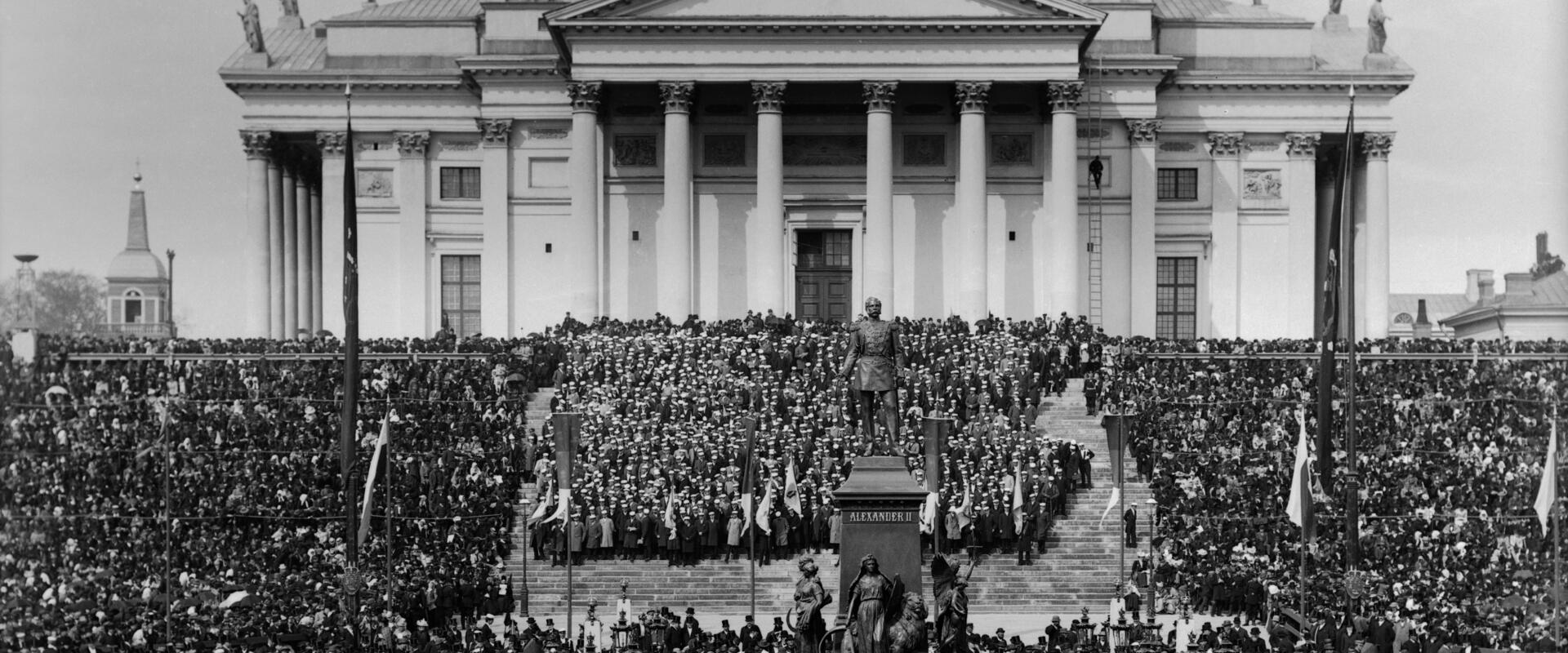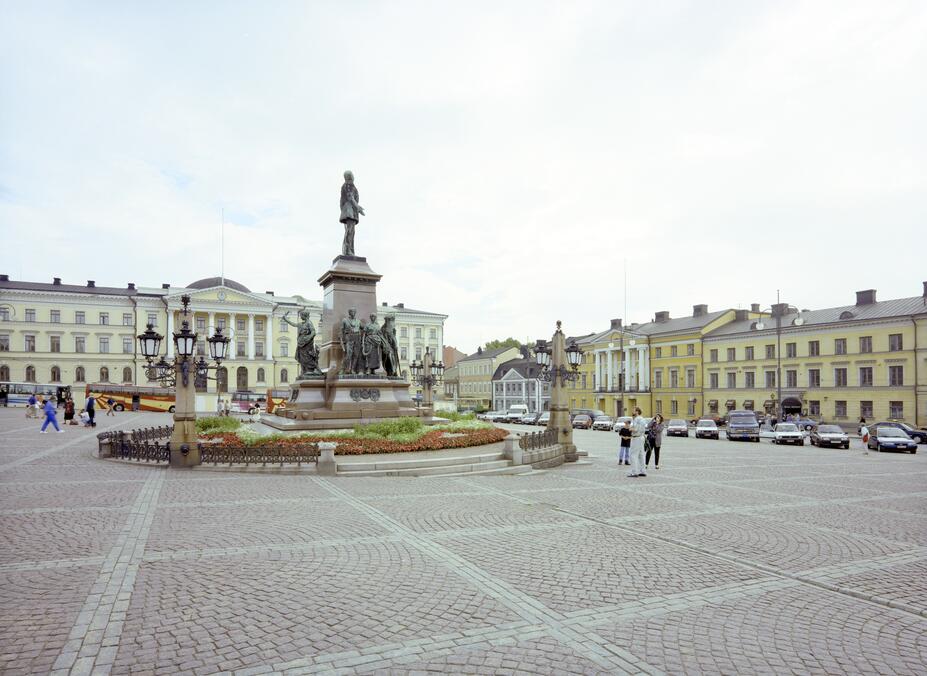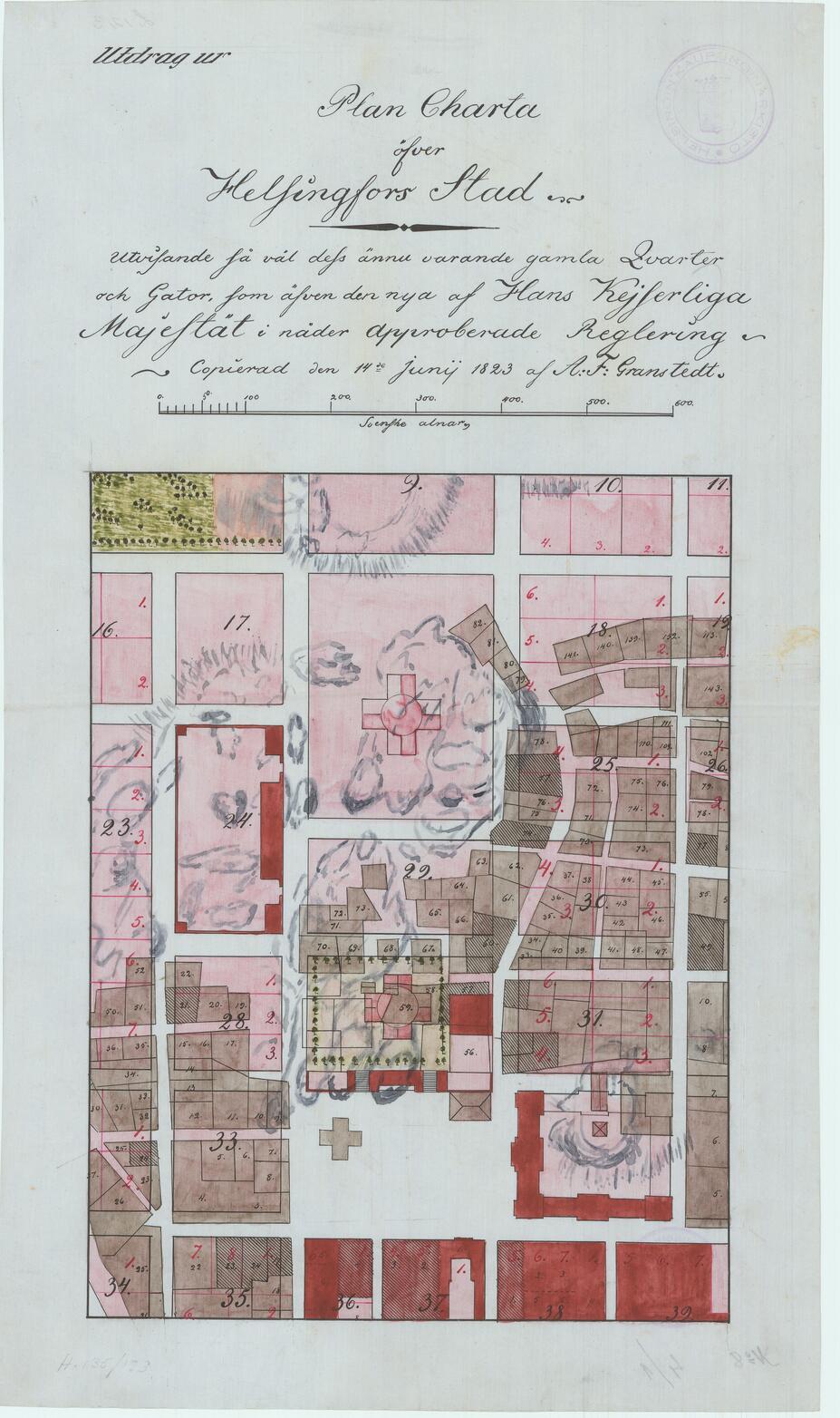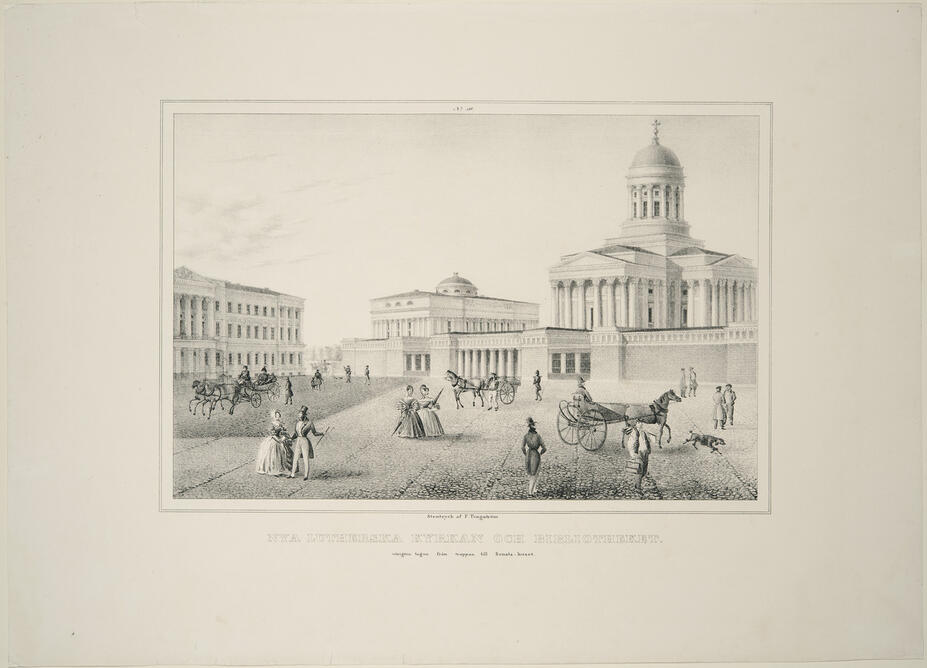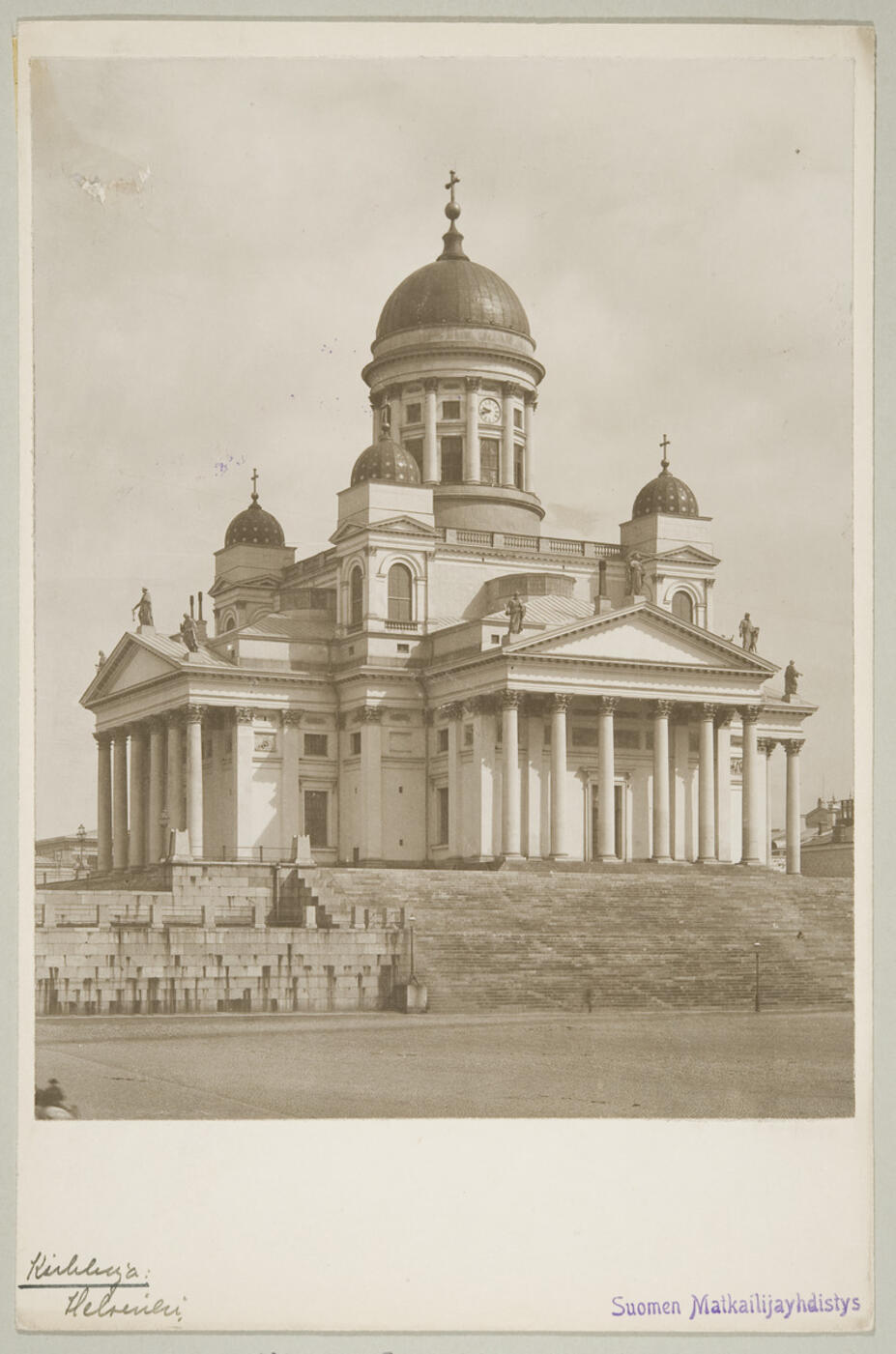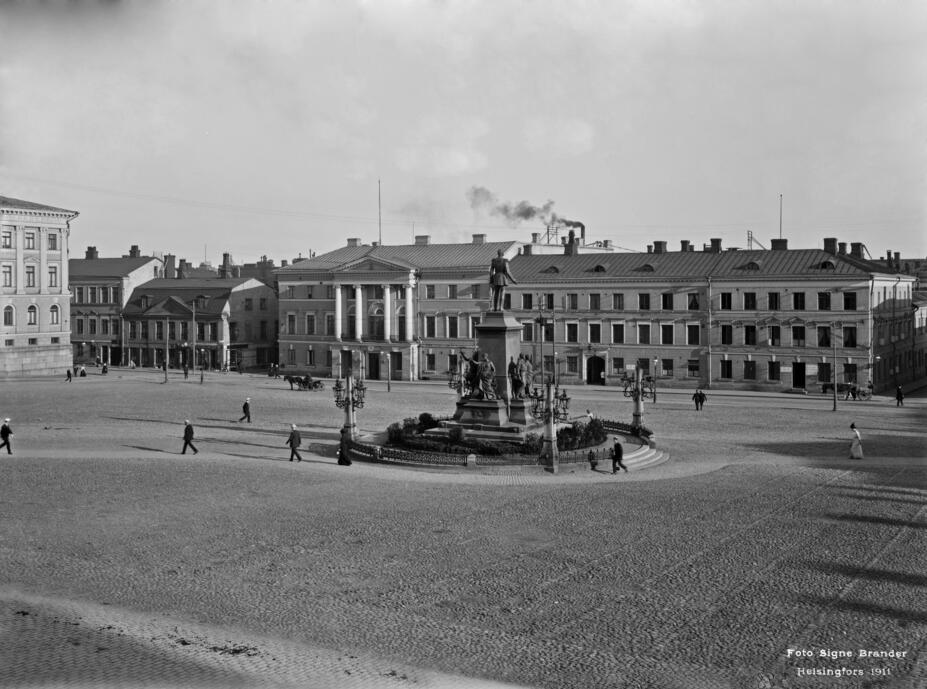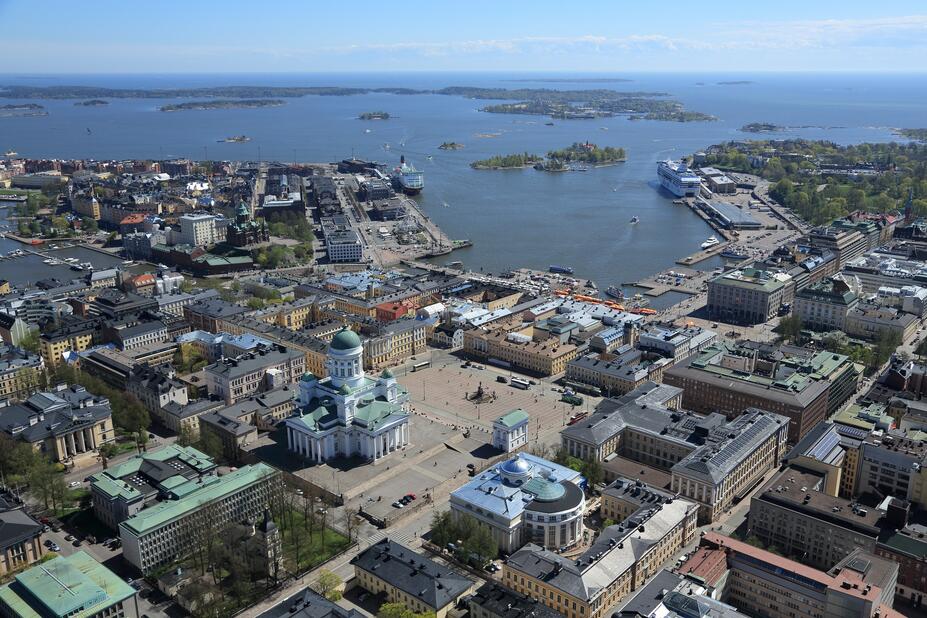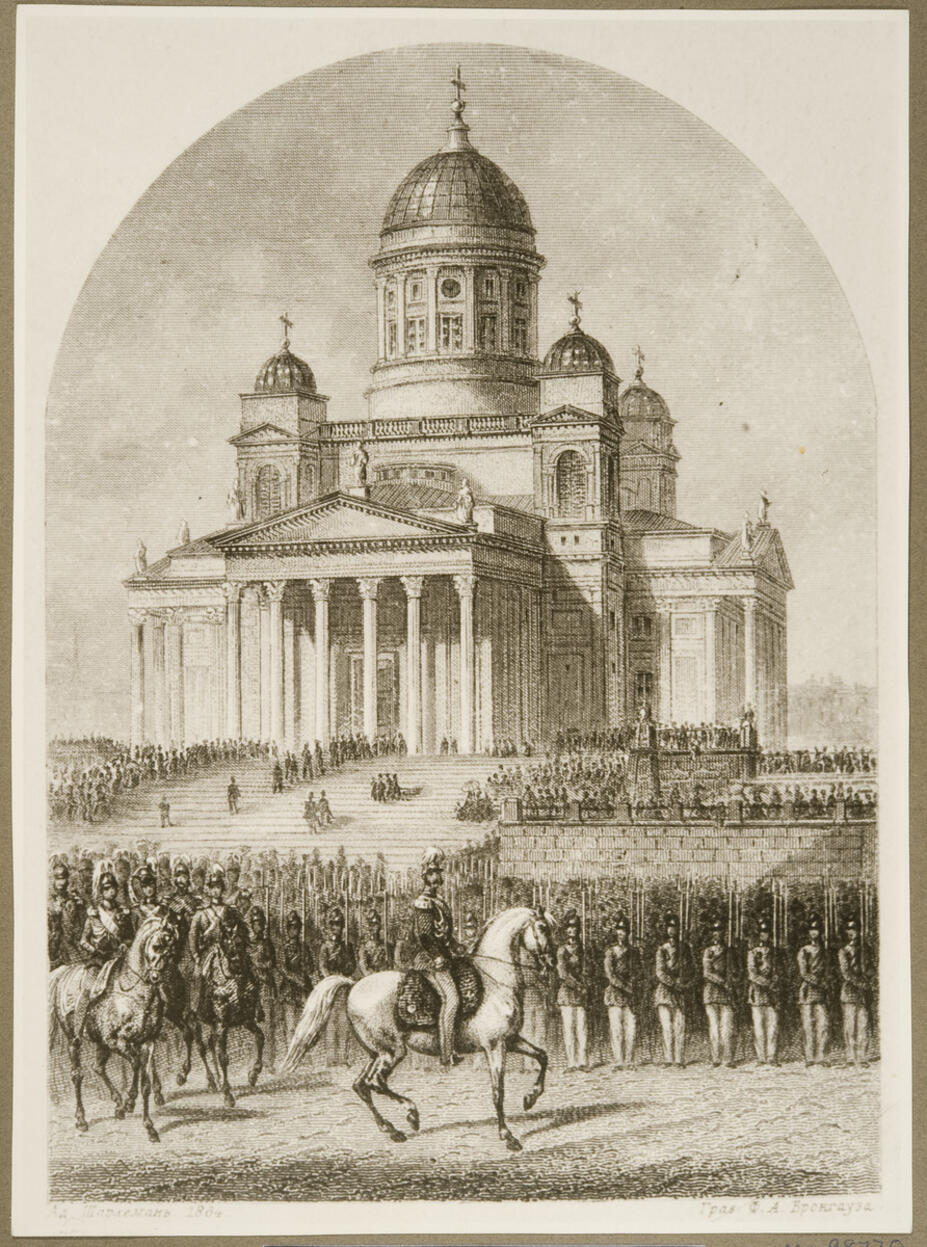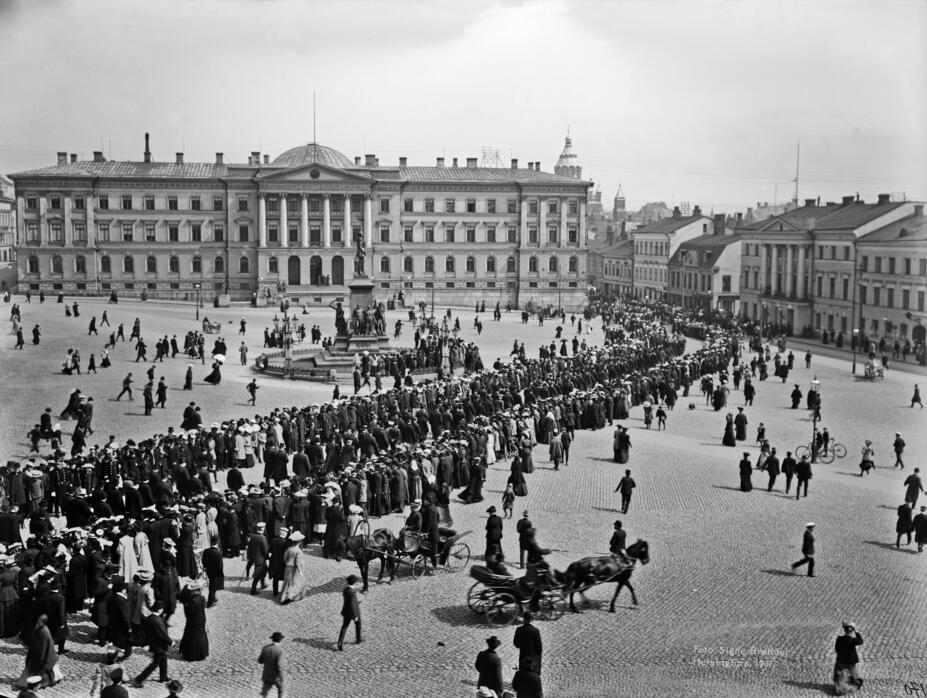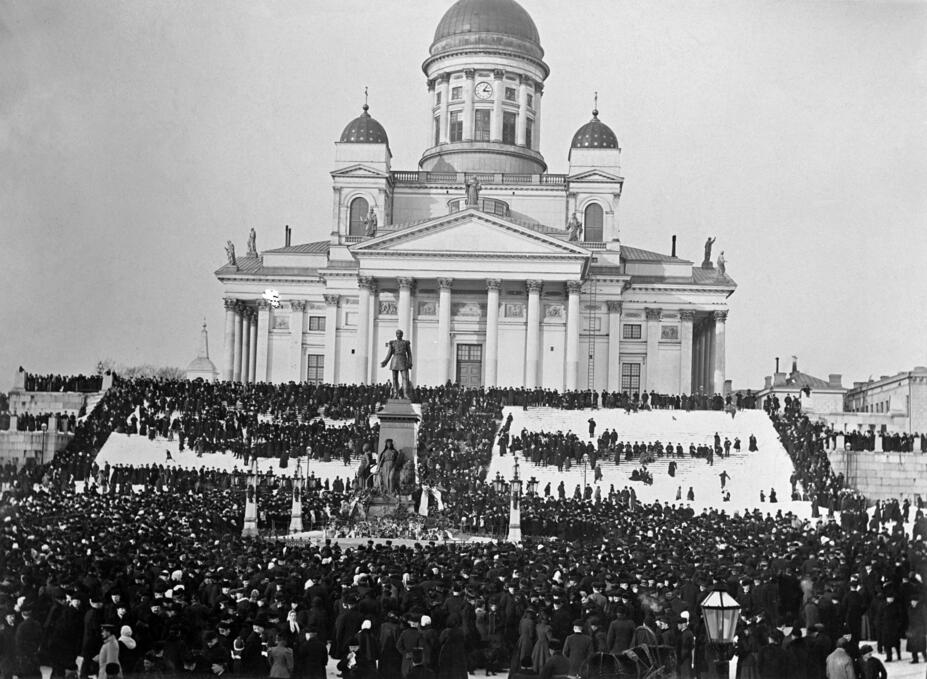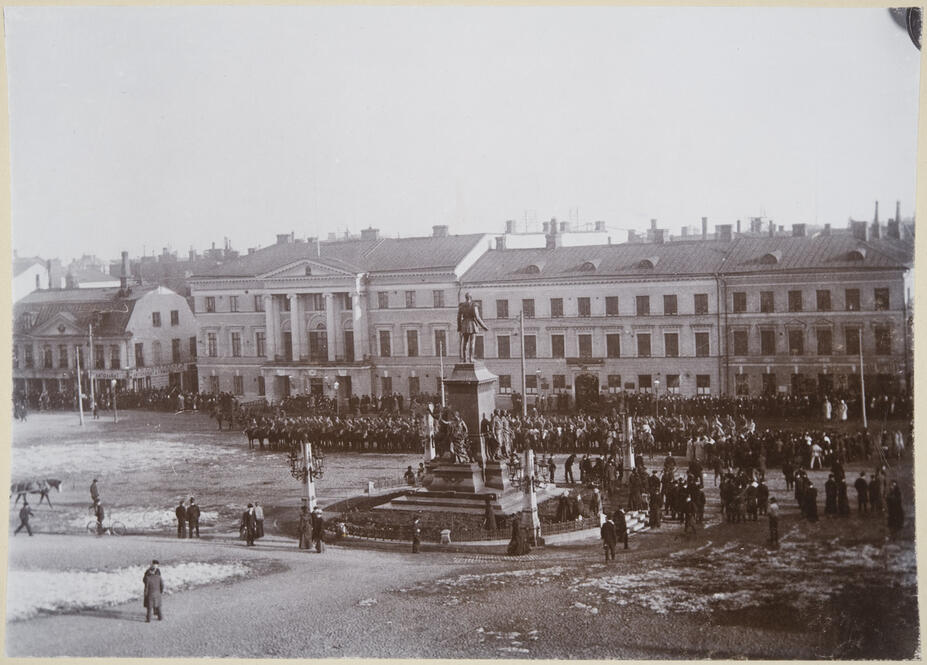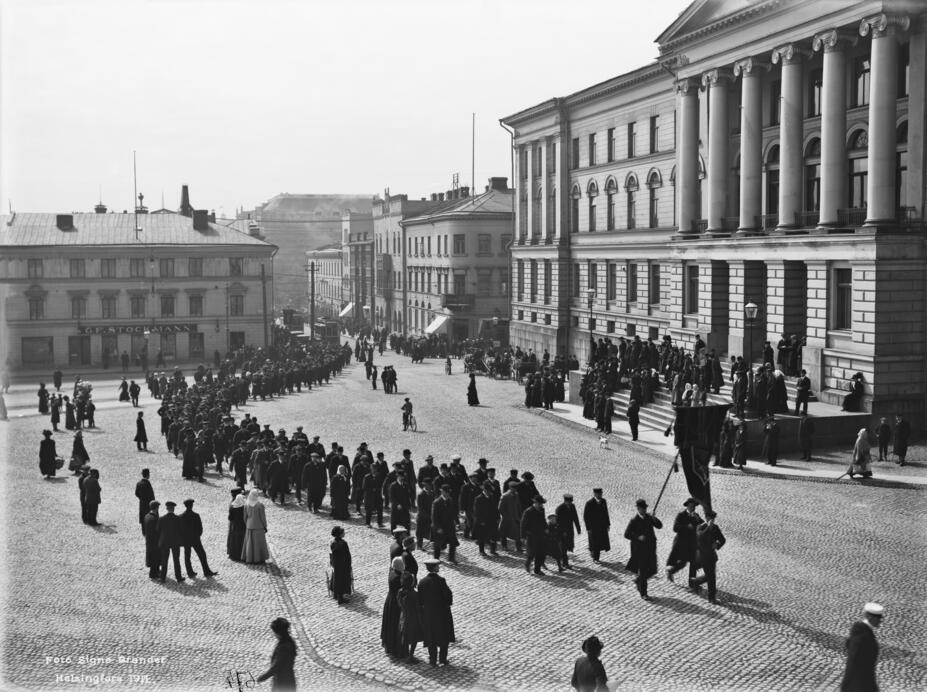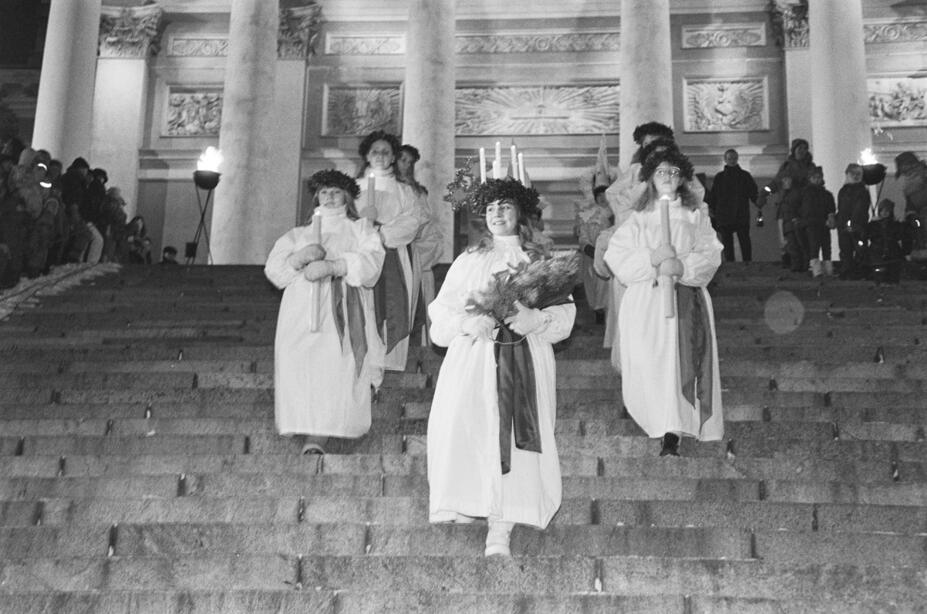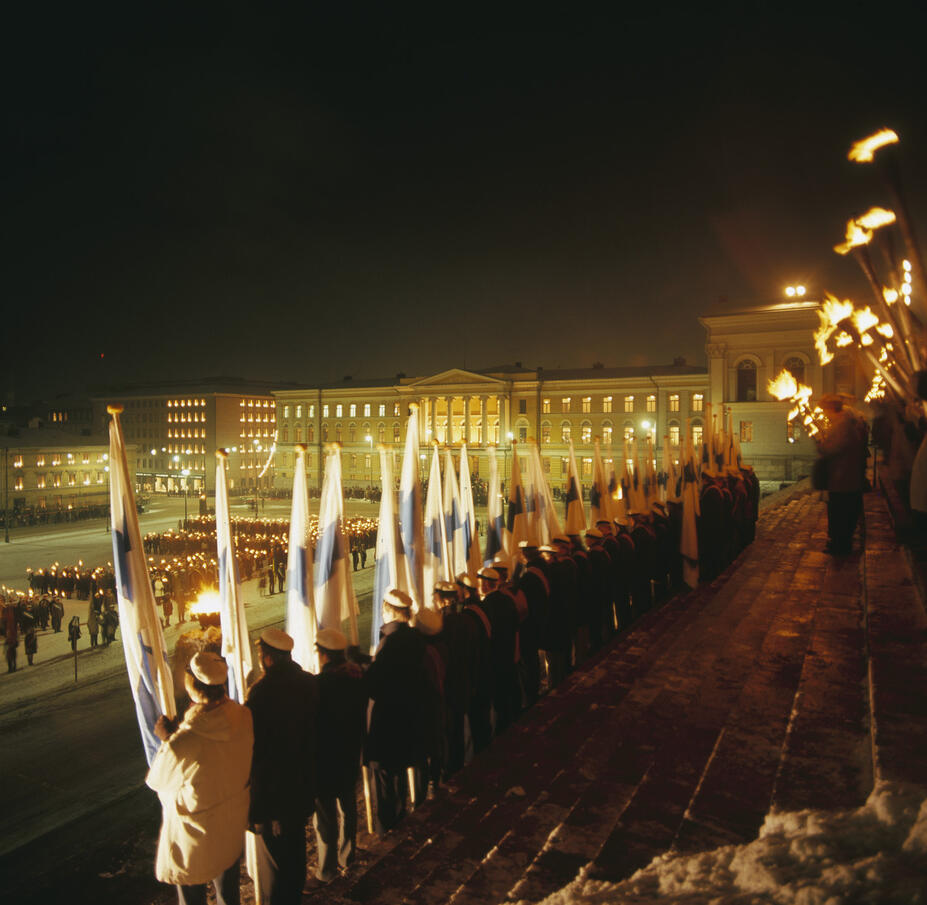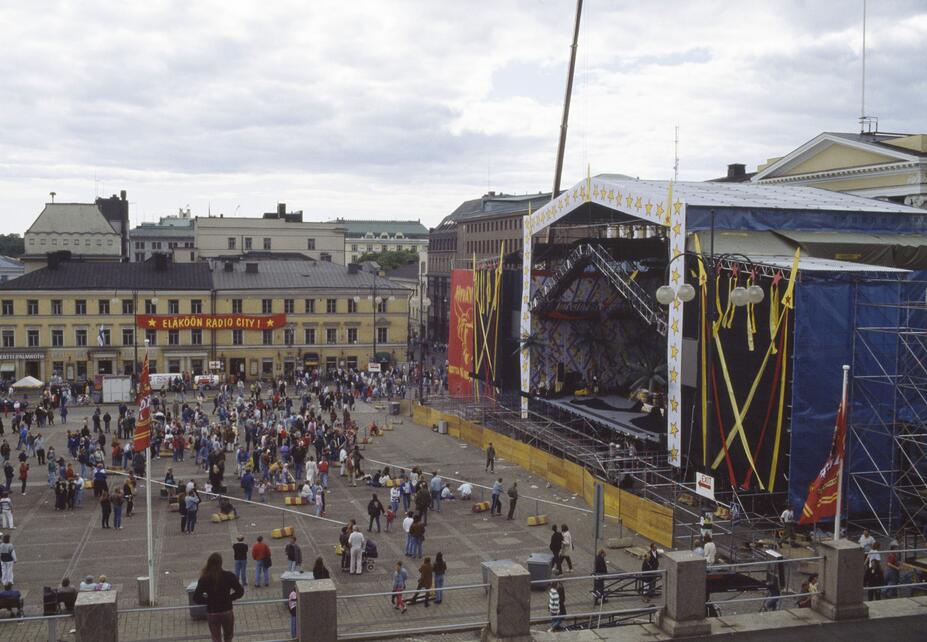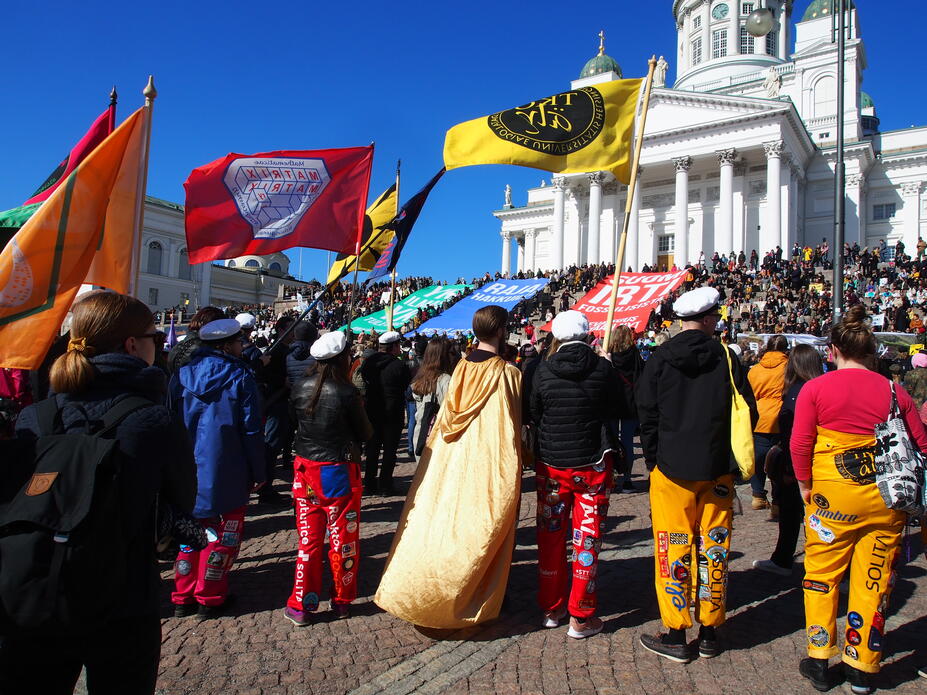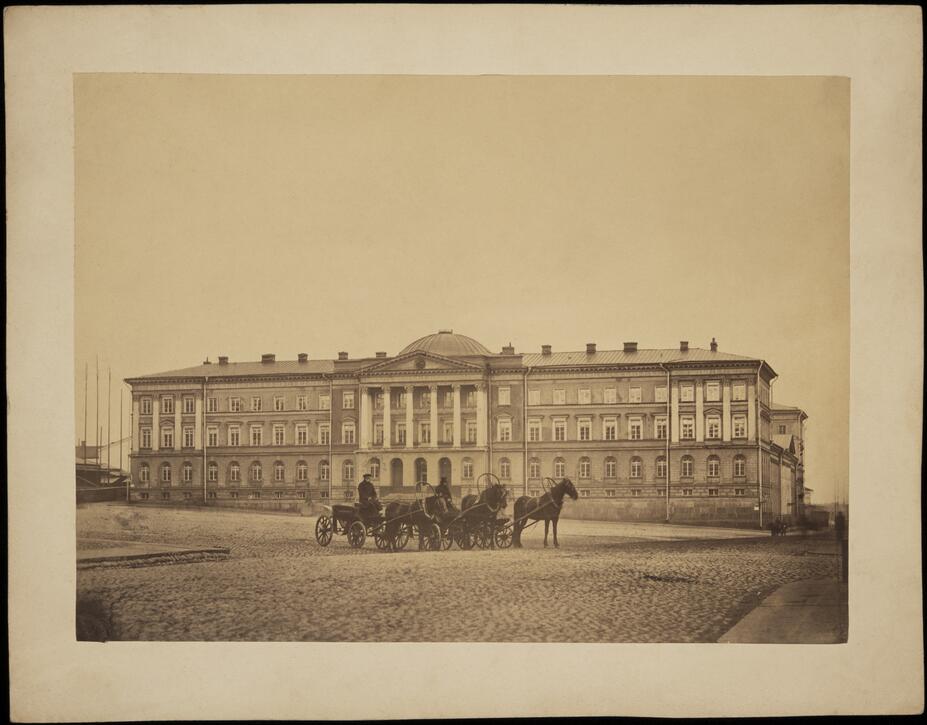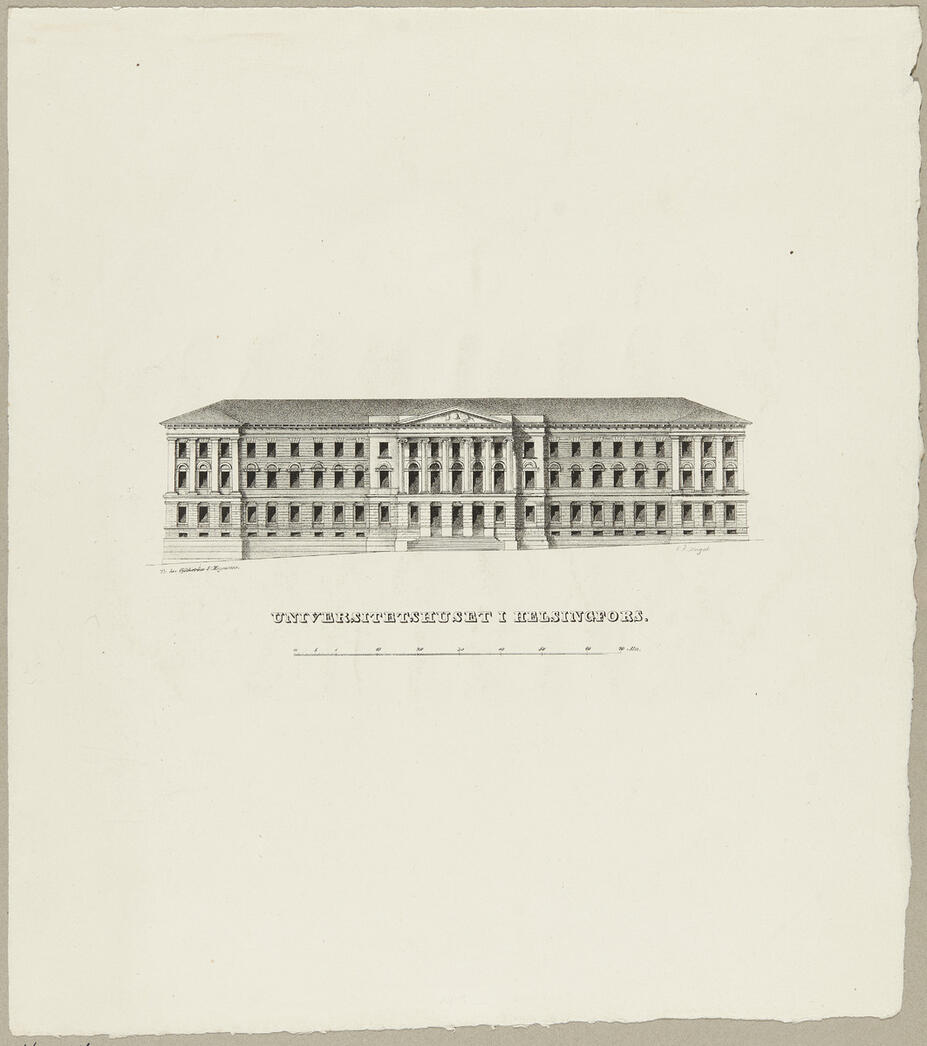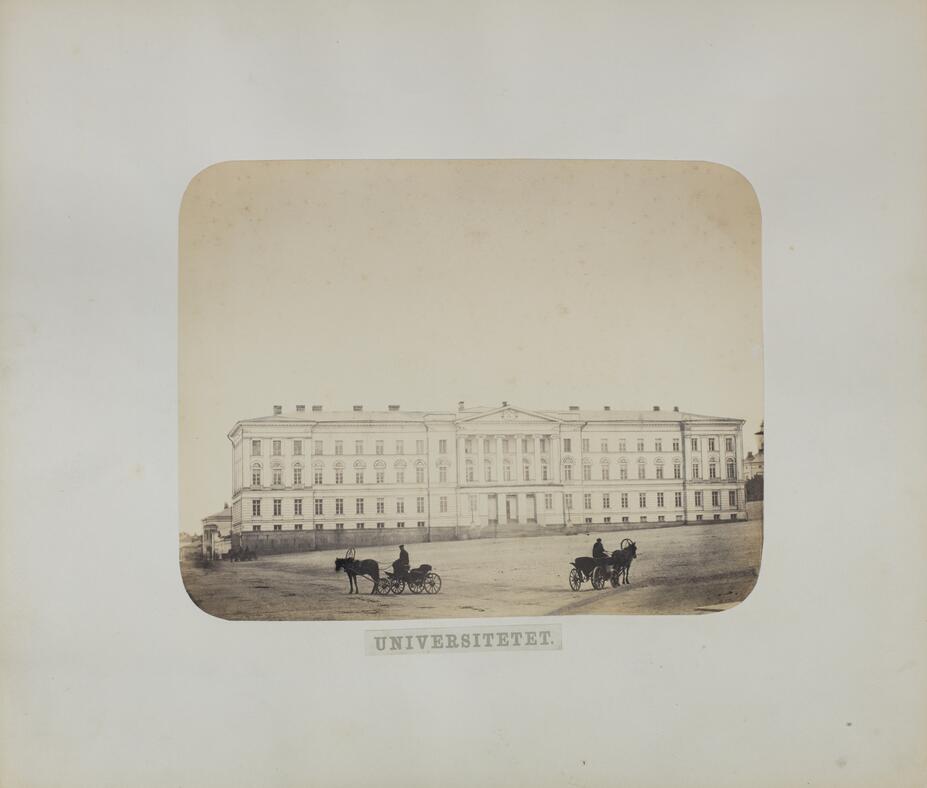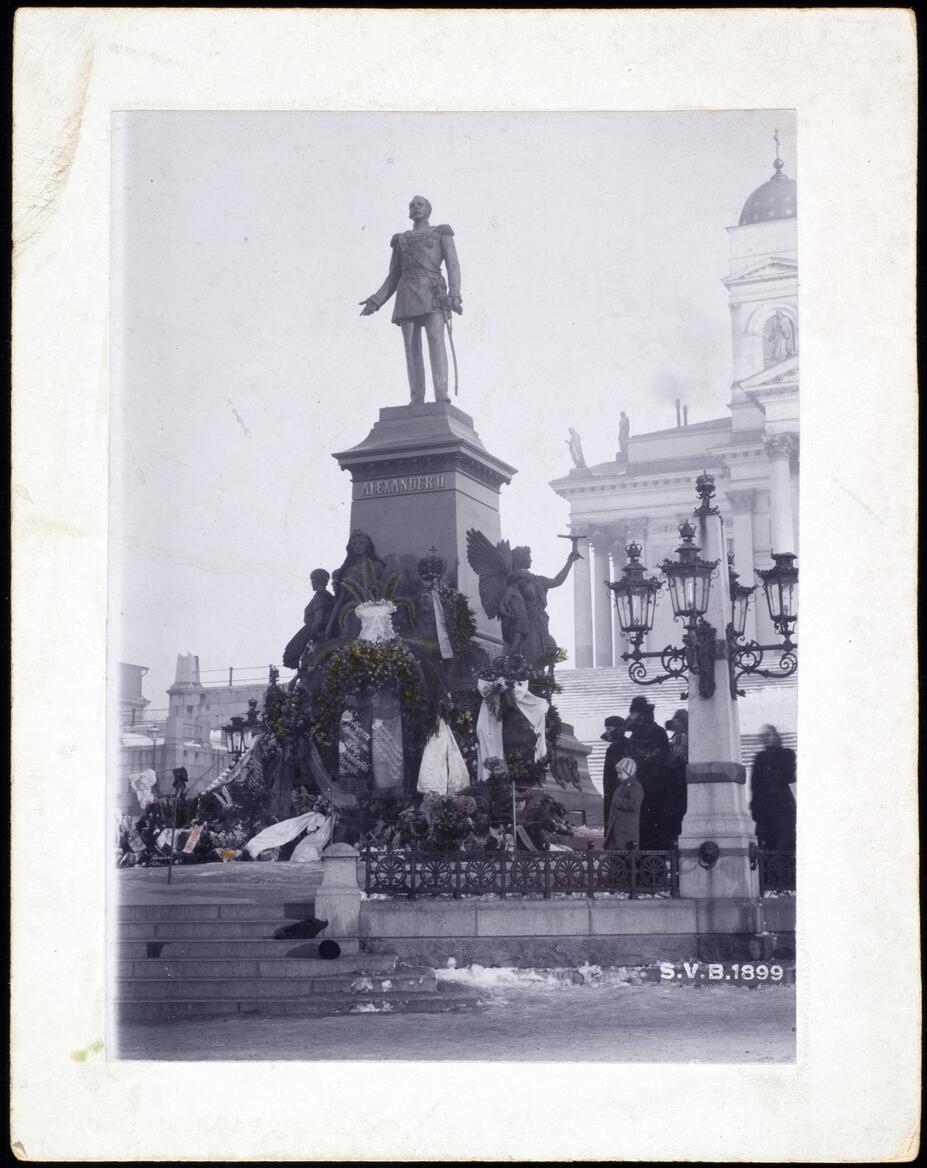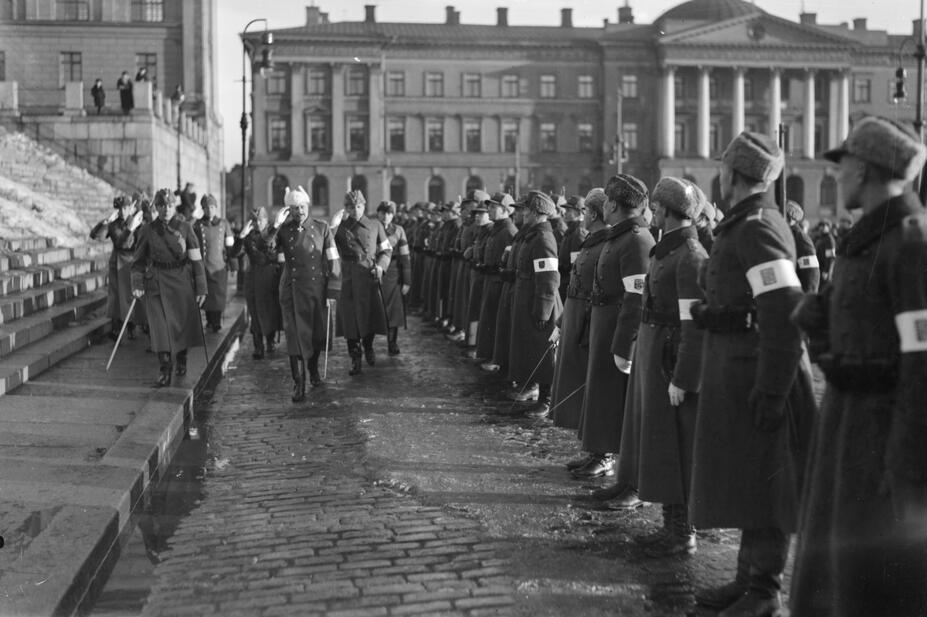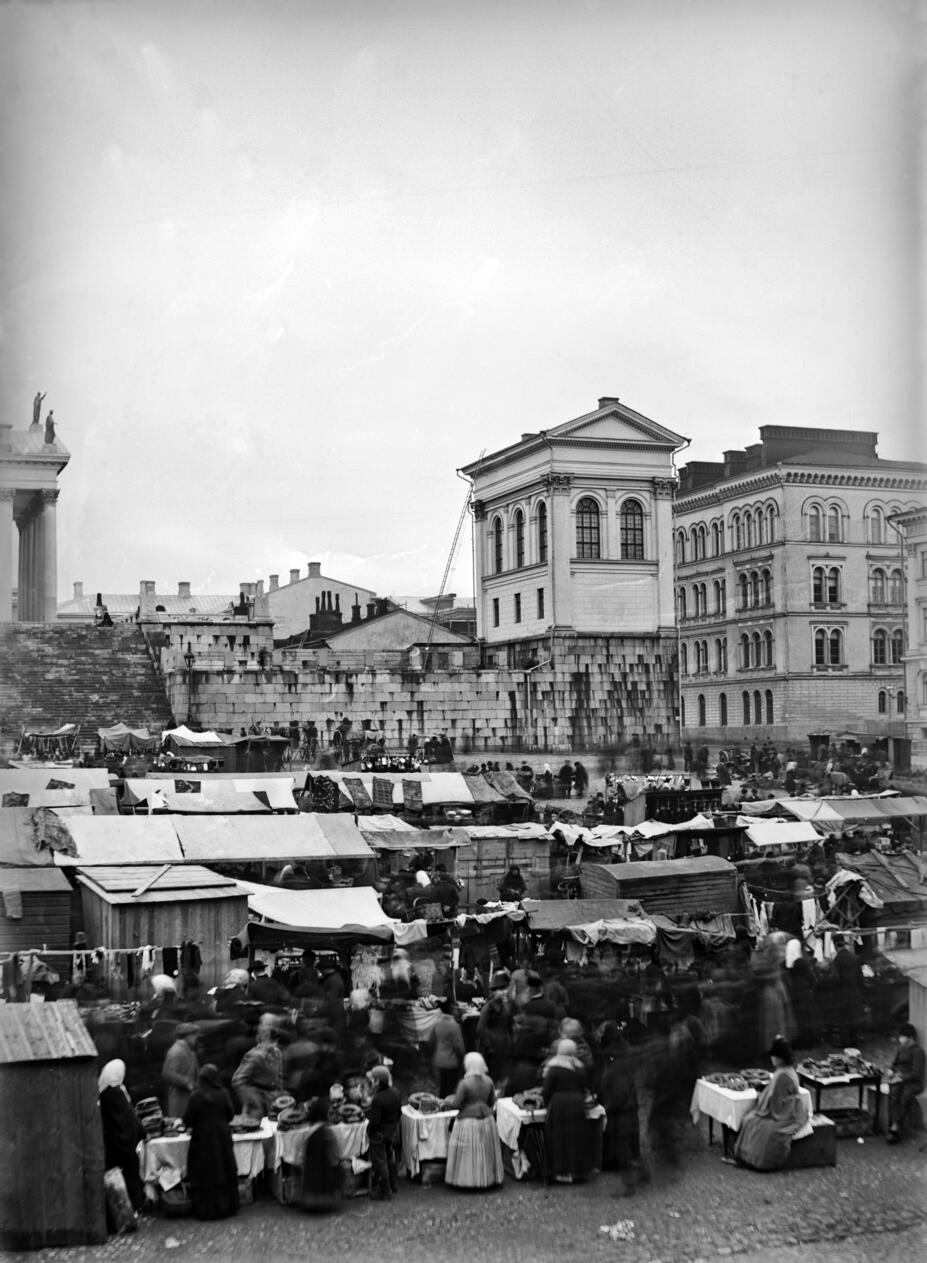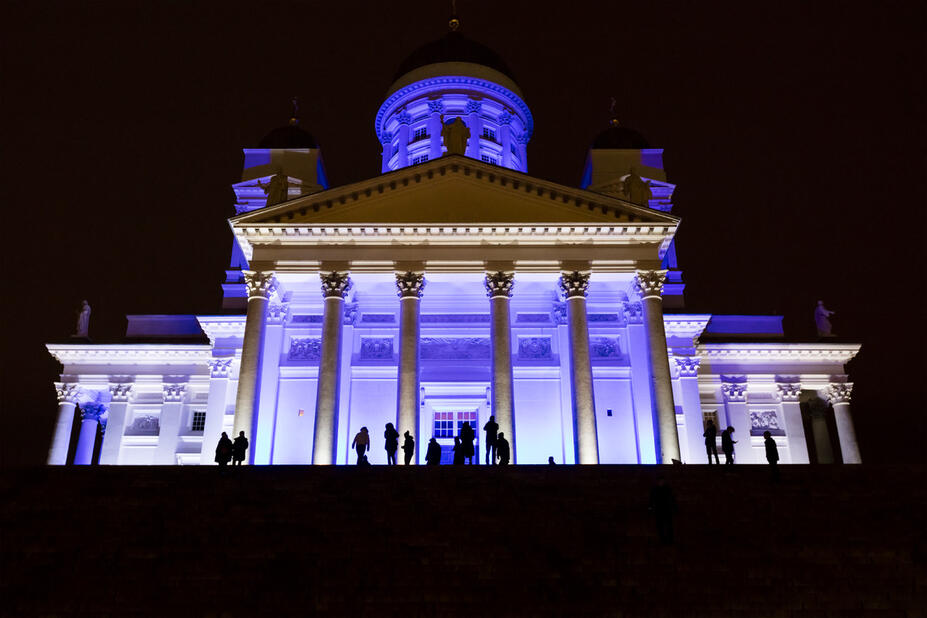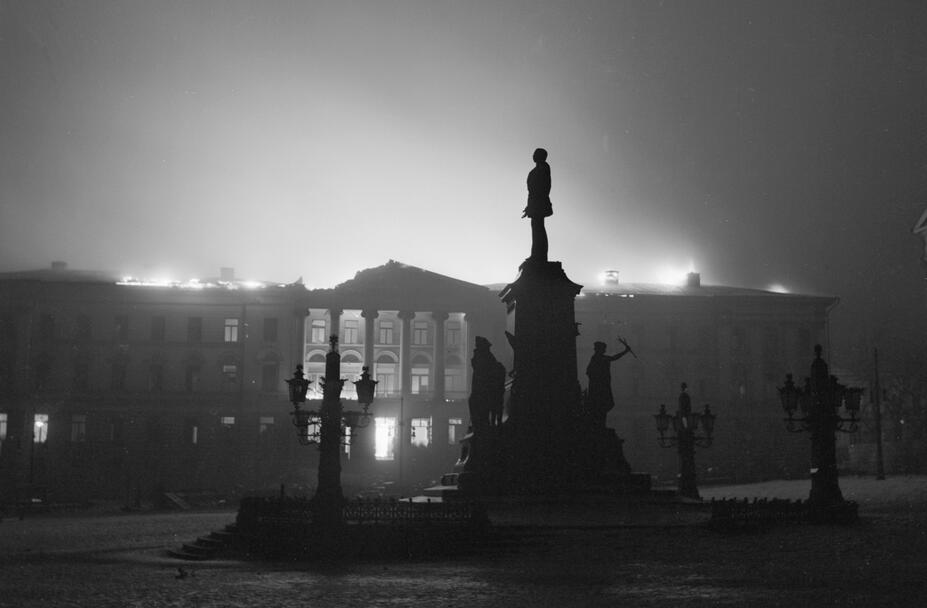When Helsinki became the capital of the Grand Duchy of Finland in 1812, the authorities decided to build a new centre to celebrate this honour. This endeavour required the demolition of the old centre, which was largely destroyed by the fire of 1808. The city's new main square, the Senate Square, was fleshed out in the 1812 town plan. The Senate Square replaced the former Great Square and the buildings surrounding it –– including the town hall and the Ulrika Eleonora Church on the western side of the square –– were demolished in the second half of the 1820s. The Great Square and the old cemetery surrounding the church were levelled to form the base of the city’s new central square.
The nation’s most important public buildings were planned around the Senate Square: the Senate building, the Governor-General's office building, the main Lutheran church, and the University of Helsinki. The buildings were designed according to ancient models drawn by the German-born Carl Ludvig Engel, who had previously worked as an architect in St. Petersburg. The Senate Square assumed its final shape by the mid-19th century.
The neoclassical building style of Helsinki's historic centre is also known as the Empire style, after the French emperor Napoleon. Napoleon favoured ancient Roman and Greek motifs and made the Empire style fashionable. The column systems that can be seen on the Senate Square were characteristic of ancient architecture. The Corinthian columns of the Government Palace symbolise Rome and governance, while the columns of the Ionic order, which feature in the University's main building, stand for Athens and civilisation. The same architectural style is also abundant in St. Petersburg, which celebrated its centenary as the capital in 1812, the year Helsinki was declared the capital. As such, Helsinki equally became a daughter of the Russian capital.
The Senate building
The first construction effort on the square, starting in 1818, was the country's most important administrative building, the House of the Senate (now the Government Palace). The main wing facing the Senate Square and the wing facing Aleksanterinkatu street were completed at the beginning of the 1820s. The House of the Senate, which takes up the entire block, was completed by the beginning of the 20th century. The Senate Square got its name from the House of the Senate, which stood on the east side of the square. In 1817, it was decided that the Senate would be moved from the former capital Turku to Helsinki, which Emperor Alexander I had declared as the capital of the new Grand Duchy. Clearly, a new building would be needed.
Imperial Alexander University
The main building of the Imperial Alexander University -– or, the present-day University of Helsinki –– on the western side of the Senate Square forms a symmetrical pair with the House of the Senate, or Government Palace, across the square. Today, the main building of the university consists of two parts: the old part completed in 1832 bordering the square, designed by Engel, and the newer part built in the 1930s along Fabianinkatu. The University was transplanted to Helsinki after the Turku fire in 1827.
St. Nicholas’ Church
The main Lutheran church was built on the north side of the Senate Square in 1831. The church was designed specifically as Lutheran, even though the mother country, Russia, was strongly Orthodox. This was part of Russia's appeasement policy: the conquered territory was allowed to retain its own religion, laws, and language. St. Nicholas’ Church (from 1917 Suurkirkko, the ‘Great Church’, now Helsinki Cathedral), dedicated to the patron saint of Emperor Nicholas I, was completed in 1852, after an arduous twenty years of construction.
The original plans called for the construction of an even bigger Orthodox church behind St. Nicholas’ Church. As can be seen in the plan shown above, however, the Orthodox church constructed on Unioninkatu was ultimately much more modest. The Orthodox Uspenski Cathedral, by contrast, was later erected in a position of much greater glory just next to the Market Square. The idea of a church located on a hilltop and dominating the cityscape was taken from the Cathedral of Christ the Saviour in Moscow. The architect, Ludvig Engel, endorsed 19th century conservatism, and the spirit of the Holy Alliance after the Napoleonic wars. According to this view, the institution of the church would subdue any social unrest, and act as a counterforce to the chaos of the French secular revolution. Emperor Nicholas I was also known to be a more conservative ruler than his predecessor Alexander I.
Read more
Empire style blocks
The neoclassical ensemble of the Senate Square also essentially includes the merchant houses found on the southern edge of the square. Built in the 18th century, these houses were renovated to match the square's neoclassical style. In particular, the so-called Bock House connects the buildings on the southern edge to the columnar architecture of the other sides of the square. The Bock House was the official residence of the Governor-General for twenty years, after which it became the town hall. Today it is part of the City Hall block.
Read more
Helsinki City Hall block a.k.a. the Lion Block (City of Helsinki) (Link leads to external service)
Statue of Alexander II
The neoclassical look of the Senate Square is complemented by the so-called Arppeanum building situated in the northeast corner of the square, and the University Library in the northwest corner. Together with the nearby blocks, the area forms a coherent, well-preserved entity. The Senate Square and Helsinki's Empire style blocks were protected as built heritage in 1952. The last change to the appearance of the Senate Square was made in 1894, when a memorial statue of Emperor Alexander II was erected in the middle of the square.
Ultimately the victim of an assassination, Alexander II has gone down in Finnish memory as a benign ruler due to the significant social, administrative, and economic reforms that were made during his rule. Grateful for these developments, the Finns honoured the ruler with a public monument. However, in the revolutionary year of 1917, a crowd of Russian soldiers and civilians tried to destroy the statue of Alexander II. Even in the early days of independence, there were demands that the statue of the Russian emperor be removed from its central location in Helsinki. The statue was permitted to remain on its pedestal, however, and any strong feelings on the matter have since cooled off.
Read more
Statue of Alexander II. Helsinki Art Museum HAM – public art portal(Link leads to external service)
A stage for governmental and civic activities
Until the end of the 19th century, the Senate Square mainly served the interests of the social elite, including its institutions — the army, administration, church, and science — and its ceremonies — military parades, opening processions of Diets, and university conferment festivities. Citizens would participate in the events mainly as spectators and subjects.
Towards the end of the 19th century, the Senate Square served as a stage for new kind of political activity. The activity was motivated by tensions in the relations between Finland and Russia, changes in society, and the transition from a society of four estates (nobility, clergy, bourgeoisie, peasantry) to a civil (or class) society. The February (March) manifesto in 1899 and the period of repression triggered a wave of nationalist resistance from Finns. They took to the streets, demonstrated, and went on strike as a protest against Russia's efforts to unify the country's legislation.
Various political forces have gathered at the Senate Square at different points over the course of the 20th century. From the 1905 General Strike to independence, the square has witnessed many mass meetings, those organised by the labour movement being particularly frequent.
In the period between the wars, the Senate Square was dominated by state events, and demonstrations were mostly organised by the political right. Events held on the square included the annual military parades that started with the victory parade of Finland’s White Army in 1918. The Peasant March of 1930 also ended at the Senate Square. After the Second World War, the left once again took over the Senate Square, with demonstrations, peace marches, and May Day celebrations. While political power relations are in constant flux, the Senate Square has remained a stage for social critique and democratic expressions of opinion.
After the wars, the Senate Square proved a festive setting for many kinds of citizen events. The traditional St. Lucia celebration in December, the students' Independence Day Torchlight Procession, and the city’s New Year's reception were all established in the 1950s. The Total Balalaika Show of the Leningrad Cowboys band and the Red Army Choir in 1993 was something of a culmination point in the event history of the Senate Square. The use of the square was democratised into an events venue for the whole nation, where, among other things, free concerts, art events, and samba carnivals can take place. The square has also hosted public celebrations for Finland’s victories in the ice hockey world championships and the Eurovision Song Contest.
Watch
Further reading, literature and sources
On this site:
1812 - Capital City
Literature
Kervanto Nevanlinna, Anja: Helsingin Historia Vuodesta 1945: 4, Voimat Jotka Rakensivat Helsinkiä 1945-2010. Helsingissä: Otava, 2012
Klinge, Matti: Pääkaupunki. Helsinki ja Suomen valtio 1808-1863. Helsinki. Otava: 2012.
Kolbe, Laura, ja Åström, Anna-Maria: Helsingin Historia Vuodesta 1945: 5, Kaupunkilaisten Helsinki. Helsinki: Suomalaisen Kirjallisuuden Seura, 2016.
Meinander, Henrik (toimittaja): Unioninakseli: Pääkaupungin Läpileikkaus. Helsinki: Teos, 2012.
Senaatintori ympäristöineen. Valtakunnallisesti merkittävät rakennetut kulttuuriympäristöt -sivusto. Museovirasto. Saatavissa: < www.rky.fi/read/asp/r_kohde_det.aspx?KOHDE_ID=4628(Link leads to external service) >
Torikorttelit. Katu- ja torialueiden päällysteet: rakennushistoriallinen selvitys. Helsingin kaupungin rakennusviraston julkaisuja 2/2011. Saatavissa pdf-tiedostona osoitteesta <www.hel.fi/hel2/hkr/julkaisut/2011/torikorttelit_web.pdf>
